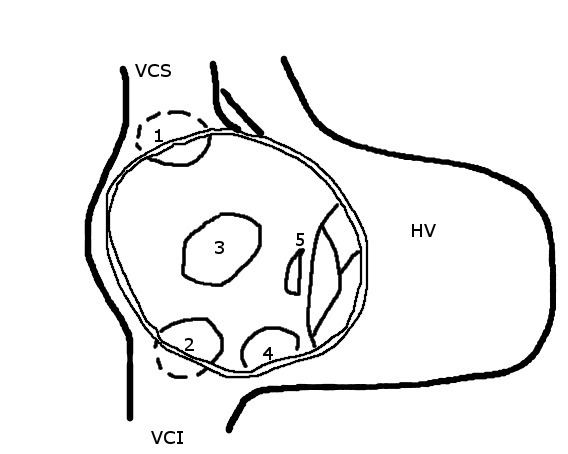Specialty medical genetics ICD-9-CM 745.6 eMedicine ped/1685 | ICD-10 Q21.2 DiseasesDB 1090 | |
 | ||
The ostium primum atrial septal defect (also known as an endocardial cushion defect) is a defect in the atrial septum at the level of the tricuspid and mitral valves. This is sometimes known as an endocardial cushion defect because it often involves the endocardial cushion, which is the portion of the heart where the atrial septum meets the ventricular septum and the mitral valve meets the tricuspid valve.
Contents
Endocardial cushion defects are associated with abnormalities of the atrioventricular valves (the mitral valve and the tricuspid valve). These include the cleft mitral valve, and the single atrioventricular valve (a single large, deformed valve that flows into both the right ventricle and the left ventricle).
Endocardial cushion defects are the most common congenital heart defect that is associated with Down's syndrome.
Classification
A defect in the ostium primum is occasionally classified as an atrial septal defect, but it is more commonly classified as an atrioventricular septal defect
Presentation
On ECG superior axis deviation is generally found in primum ASD, but an RSR pattern (M pattern) in V1 is characteristic. Fixed splitting of the second heart sound occurs because of equal filling of the left and right atria during all phases of the respiratory cycle.
Patients with Atrial Septal Defects may have Atrial Fibrillation, Atrial Tachycardia, or Atrial Flutter, but these arrythmias are not usually seen until patients grow older. Features also seen on the EKG include Right Atrial Enlargement, PR prolongation and advanced AV block. When you suspect a patient has an ASD based on the findings of an incomplete Right Bundle Branch Block with a rSr' or rSR' the next thing you should do is examine the frontal plane QRS. The frontal plane QRS is the most helpful clue to help you differentiate Secundum ASD from Primum ASD. In Primum defects left axis deviation is seen in most patients with an axis of > -30 degrees and very few patients have right axis deviation. In contrast Secundum defects have an axis between 0 degrees and 180 degrees with most cases to the right of 100 degrees.
In the ECG above, you can see an example of the rSR' pattern in V1 with a R' greater than S with T wave inversion which is commonly seen in volume overload Right Ventricular Hypertrophy.
